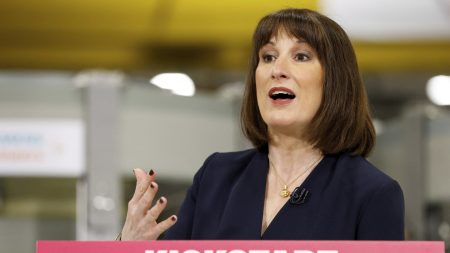The US Economy Ends 2024 on a Strong Note
The American economy closed out 2024 on a high note, with consumer spending continuing to be a driving force behind growth. According to a report by the Commerce Department, the gross domestic product (GDP), which measures the economy’s output of goods and services, expanded at a 2.3% annual rate in the fourth quarter (October through December). For the entire year, the economy grew by a robust 2.8%, slightly below the 2.9% growth seen in 2023. While the fourth-quarter growth was slightly below the 2.4% forecast by economists surveyed by FactSet, the overall performance suggests a resilient economy heading into 2025. This strong finish comes as the U.S. prepares for potential shifts in economic policy under the incoming Trump administration.
Consumer Spending Leads the Charge
Consumer spending emerged as the standout performer in the fourth quarter, growing at a 4.2% annual pace—the fastest since the first quarter of 2023. This surge in spending was a significant contributor to GDP growth, up from 3.7% in the previous quarter. However, business investment painted a different picture, with a sharp decline in equipment investment following two consecutive strong quarters. This drop in investment could raise concerns about future productivity and growth, as businesses appear to be pulling back on expansion plans. Despite this, the overall strength of consumer spending underscores the confidence of American households, which has been a key driver of economic stability.
Inflationary Pressures Persist
Inflation remains a persistent challenge for the U.S. economy. The Federal Reserve’s preferred inflation gauge, the personal consumption expenditures (PCE) index, rose at a 2.3% annual rate in the fourth quarter, exceeding the central bank’s 2% target. Core PCE inflation, which excludes volatile food and energy prices, climbed to 2.5%, up from 2.2% in the previous quarter. These figures suggest that inflationary pressures are still entrenched, despite the Fed’s efforts to tame them through rate hikes in 2022 and 2023. The central bank’s cautious approach to further rate cuts reflects its concern about inflation’s refusal to subside, even as economic growth continues to hold steady.
The Economy’s Underlying Strength
Despite some mixed signals, the economy’s underlying strength remains robust. A key category within GDP data, which excludes volatile components such as exports, inventories, and government spending, grew at a healthy 3.2% annual rate in the fourth quarter. This figure, while slightly down from the 3.4% growth in the third quarter, indicates that the fundamental drivers of the economy remain intact. Paul Ashworth, chief North America economist at Capital Economics, noted that this underlying strength suggests the economy is weathering disruptions, such as a strike at Boeing and the aftermath of two hurricanes, with remarkable resilience.
The New Administration Inherits a Strong Economy
President Donald Trump takes office at a time when the economy is in solid shape. With steady growth and low unemployment—4.1% in December—the U.S. economy has defied expectations of a recession. This resilience is all the more impressive given the Federal Reserve’s aggressive rate hikes in 2022 and 2023 to combat soaring inflation. Instead of triggering a downturn, these measures have been absorbed by an economy that has now seen GDP growth exceed 2% in nine of the last 10 quarters. However, the road ahead is less certain, as Trump’s policy agenda—including tax cuts, deregulation, and trade restrictions—could either accelerate growth or create headwinds.
A Cloudy Outlook and the Role of the Federal Reserve
While the near-term economic prospects appear solid, uncertainties loom on the horizon. Trump’s vows to cut taxes and ease regulations could stimulate business activity and drive growth, but his plans to impose tariffs on imports and deport millions of undocumented immigrants could lead to slower growth and higher prices. Additionally, Trump’s recent comments about lowering oil prices and demanding lower interest rates have sparked questions about his influence on the Federal Reserve. Fed Chair Jerome Powell has maintained a cautious stance, leaving the benchmark interest rate unchanged and emphasizing that the central bank is in no hurry to make further cuts. This approach reflects the Fed’s balancing act between supporting growth and controlling inflation, even as global economic contrasts—such as the stagnation in Europe—highlight the relative strength of the U.S. economy. Looking ahead, economists expect first-quarter GDP growth to slow slightly, potentially dipping below 2%, as the full impact of Trump’s policies begins to take shape. Thursday’s GDP release marked the first of three estimates for the fourth-quarter growth, setting the stage for a year that could bring significant shifts in the economic landscape.








